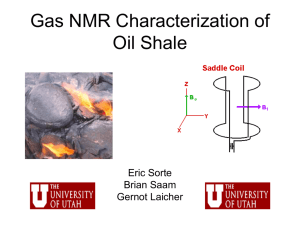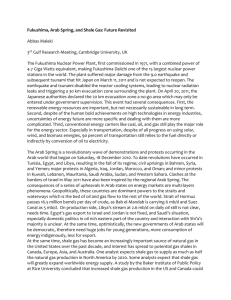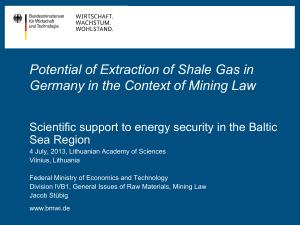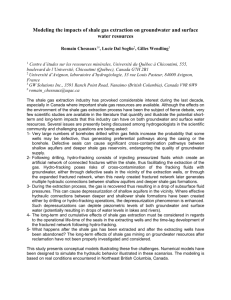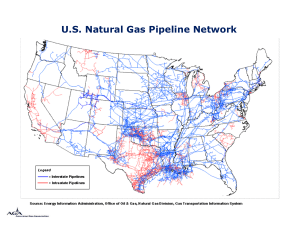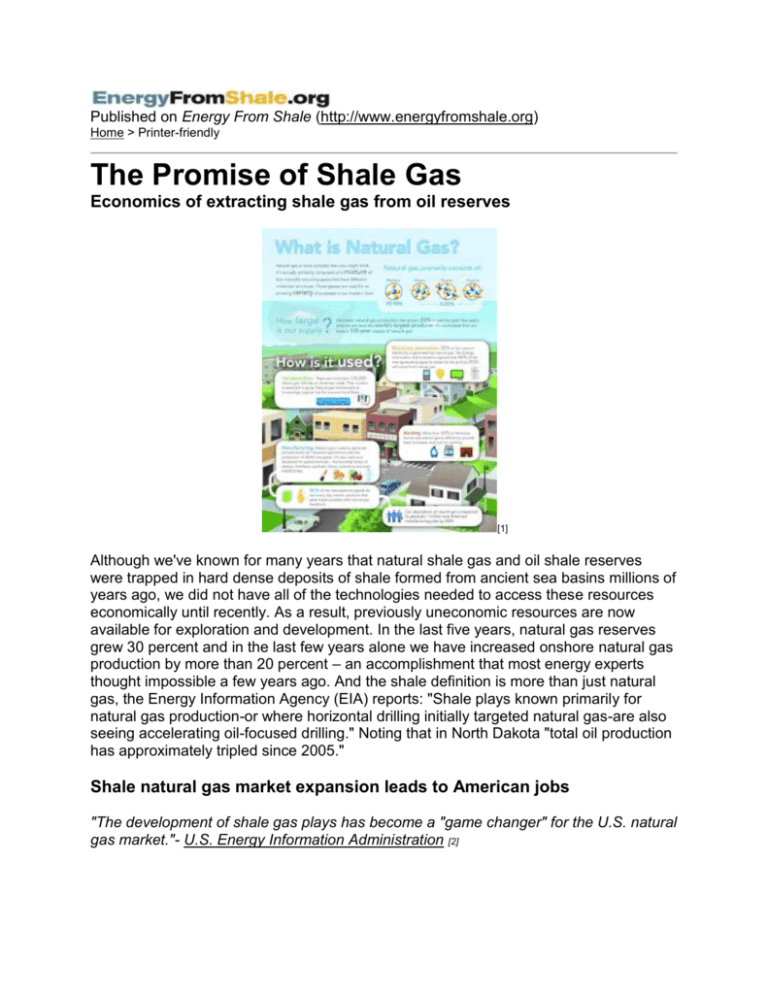
Published on Energy From Shale (http://www.energyfromshale.org)
Home > Printer-friendly
The Promise of Shale Gas
Economics of extracting shale gas from oil reserves
[1]
Although we've known for many years that natural shale gas and oil shale reserves
were trapped in hard dense deposits of shale formed from ancient sea basins millions of
years ago, we did not have all of the technologies needed to access these resources
economically until recently. As a result, previously uneconomic resources are now
available for exploration and development. In the last five years, natural gas reserves
grew 30 percent and in the last few years alone we have increased onshore natural gas
production by more than 20 percent – an accomplishment that most energy experts
thought impossible a few years ago. And the shale definition is more than just natural
gas, the Energy Information Agency (EIA) reports: "Shale plays known primarily for
natural gas production-or where horizontal drilling initially targeted natural gas-are also
seeing accelerating oil-focused drilling." Noting that in North Dakota "total oil production
has approximately tripled since 2005."
Shale natural gas market expansion leads to American jobs
"The development of shale gas plays has become a "game changer" for the U.S. natural
gas market."- U.S. Energy Information Administration [2]
[3]
Having abundant, clean-burning, domestic, reliable supplies of natural gas promises
more affordable energy and more stable prices. Clean-burning shale natural gas is
critical to American manufacturing jobs, to farmers for fertilizer, to households for
heating and cooking, to businesses for electricity and fuel for transportation needs, and
to society to help address climate change concerns because of its low carbon-content. It
means energy-intensive manufacturing companies, which had been moving overseas
for cheaper energy, can stay home promising more jobs, higher incomes and a better
energy future for all Americans.
"The use of horizontal drilling in conjunction with hydraulic fracturing has greatly
expanded the ability of producers to profitably recover natural gas and oil from lowpermeability geologic plays—particularly, shale plays" – U.S. Energy Information
Administration [4]
Shale gas play locations
Shale gas maps show "plays" are found throughout the Mountain West, the South and
throughout the Northeast's Appalachian Basin. These plays are geographic areas where
companies are actively looking for natural gas, and shale oil reserves in shale rock. The
Barnett shale play in Texas, for example, is 5,000 square miles and provides 6 percent
of U.S. natural gas. The Marcellus shale play that stretches across Pennsylvania, New
York, Ohio and West Virginia covers ten times the square miles of the Barnett, but has
only recently started to be developed. The development of the Marcellus and Barnett
Shale natural gas has boosted local economies—generating royalty payments to
property owners, providing tax revenues to the government and creating much-needed
American jobs.
Impacts of shale oil reserve resources
The EIA reports [5] that over 750 trillion cubic feet of technically recoverable shale gas
and 24 billion barrels of technically recoverable shale oil resources in discovered shale
plays. Responsibly developing these resources creates jobs and fuels our economy.
And the key to unlocking these resources is through the process of hydraulic fracturing,
also known as fracking - a common shale gas extraction processs definition.
Fracking has emerged as a contentious issue in many communities, and it is important
to note that there are only two sides in the debate: those who want our oil and natural
resources developed in a safe and responsible way; and those who don’t want our oil
and natural gas resources developed at all. Development does bring with it some
challenges, but the oil and natural gas industry has and will continue to work with
concerned citizens, regulators and policy makers to make sure that it is done
responsibly.
© 2011 EnergyFromShale.org All Rights Reserved.
Source URL: http://www.energyfromshale.org/about-shale-gas






